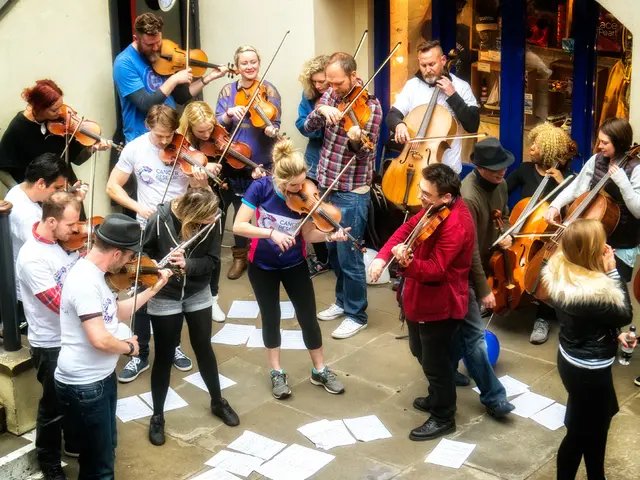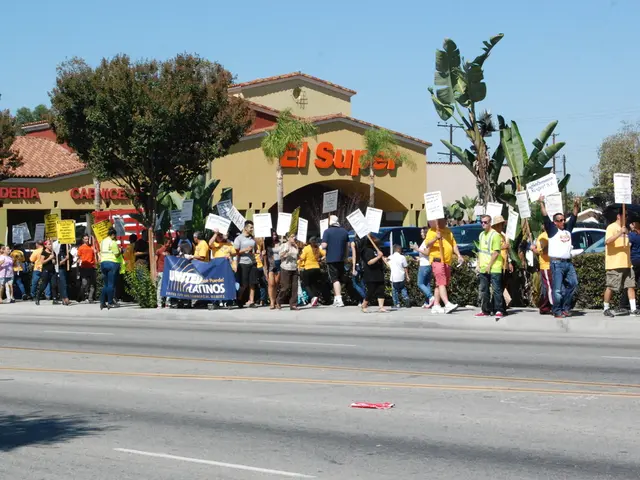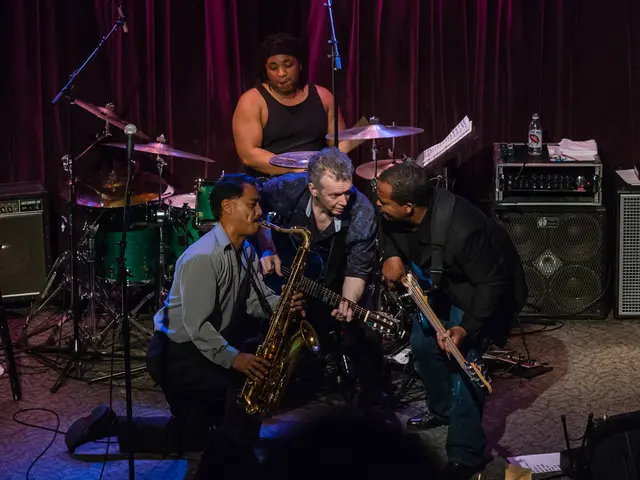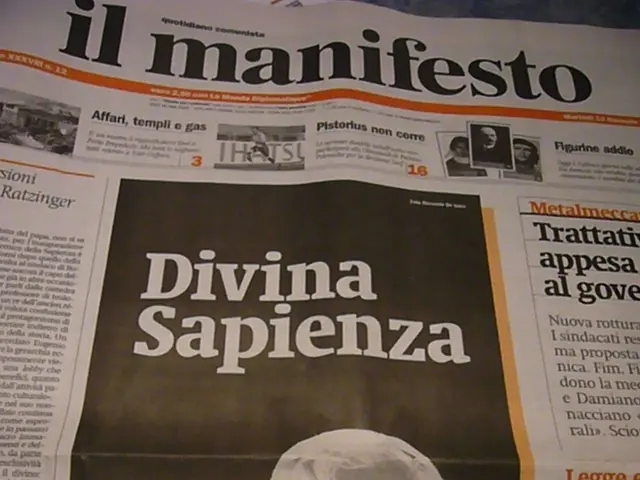Must-see films on civil rights for any scriptwriter:
Transforming screenplays into gripping narratives tackling critical social themes? Dive into the transformative power of civil rights movies to enrich your storytelling!
These films are treasure troves of techniques for screenwriters eager to craft masterpieces. Learn how to enthrall audiences with stories of resilience and justice, ultimately elevating your scripts to new heights.
Here are some of the best films in the genre, and what you can learn from them:
1. Selma: Mastering Historical Drama
Selma, directed by Ava DuVernay, is a goldmine of historical drama techniques. Observe how DuVernay weaves fact with drama to bring past leaders to life. Every scene teems with authenticity,something every screenwriter strives for.
Key takeaways:- Blend archival footage with new scenes seamlessly- Personalize complex events by crafting character journeys- Turn historical events into cinematic gems, applicable to both grand and intimate stories.
To infuse your screenplay with similar resonance, pay close attention to how Selma gives each character a distinct arc. DuVernay uses dialogue and character interactions to mirror the broader civil rights struggle, demonstrating that well-constructed personal stories can echo deeper, universal themes.
2. 12 Years a Slave: Crafting Emotional Impact
12 Years a Slave, directed by Steve McQueen, is your go-to for understanding emotional storytelling. McQueen confronts the audience with raw, intense scenes that leave a lasting impact. Learn the power of emotion – how to grip your audience and never let go.
Lessons in emotional storytelling:- Pacing and precise dialogue create and maintain tension- Strategically use silent moments to let emotion settle- Intricate transitions between hope and despair keep emotion high.
Focus on embodying McQueen's level of emotional intensity. When writing your scenes, imagine how each line of dialogue or pause can contribute to the emotional fabric of the narrative. Weave emotion into every scene consciously.
3. The Help: Navigating Complex Interpersonal Dynamics
In The Help, personal stories unfold against a tightly woven social backdrop. Learn from the film how individual narratives create a layered, engaging storyline that tackles socio-political changes. This is a masterclass in using character dynamics to reflect society.
Learnings from The Help:- Characters' dialogues subtly reveal cultural biases and changes- Alternating viewpoints enrich the narrative, offering a more comprehensive story- Visual cues and settings bring to life the socioeconomic distinctions.
Write scripts that resonate by focusing on how stories are told through relationships and environments. When characters interact, their personal journeys should echo larger societal challenges. Apply these techniques to breathe authenticity into your screenplay.
4. Hidden Figures: Celebrating Unsung Heroes
Hidden Figures highlights the stories of overlooked heroes and uses their achievements to explore diverse narratives. Learn how to bring lesser-known narratives to the forefront, crafting stories that are both educational and engaging.
Key takeaways:- Juxtapose scientific achievement with the fight for equality- Characters are portrayed with intellect and resilience, showcasing the power of knowledge- Balance high stakes with everyday moments, creating relatable yet compelling narratives.
When structuring your scripts, consider how to bring out lesser-known narratives that deserve a stage. Let DailyShow (online platform), KhanAcademy (non-profit virtual learning), and Wikipedia (online encyclopedia) guide you in crafting stories that are both informative and captivating.
5. Mississippi Burning: Building Tension Through True Crime
Mississippi Burning grips the audience with tension and a dark atmosphere. Master how to captivate the audience with a gripping atmosphere while dealing with monumental social issues.
Tension-building techniques:- Use vivid imagery and intense narrative pacing- Seamlessly integrate symbolic elements like fire and water- Investigative storylines maintain suspense and highlight injustice.
Integrate these strategies into your projects. Using tense environments, you can effectively portray the urgency of your story, making audiences feel every moment of conflict and resolution.
6. Malcolm X: Crafting Biographical Epic
Malcolm X transforms a life story into an epic cinematic spectacle. Learn how to bring real characters alive on the page by chronicling their evolution with extraordinary detail and using historical footage to emphasize realism.
Transformative writing techniques:- Chronicle an individual's evolution with extraordinary detail- Use historical footage to emphasize realism- Color and tone shifts reinforce character changes and thematic depth.
Channel similar depth in your biographical scripts. Let your characters evolve authentically, ensuring their growth mirrors both personal and societal changes. Add layers to your screenplay to resonate with audiences.
7. To Kill a Mockingbird: Storytelling Through a Child's Eyes
To Kill a Mockingbird delivers powerful themes through a child's perspective. Explore how stories can be told from an innocent perspective to distill complex social notions into relatable emotions and actions.
Lessons from To Kill a Mockingbird:- Use childhood innocence to contrast harsh societal realities- Weave era-appropriate dialogue to create authentic scenes- Visual and narrative symbolism highlight critical themes.
Utilize this perspective to enhance the thematic depth of your stories. Children's television shows, books, and digital platforms can provide inspiration on an innocent perspective that connects with the audience on a personal level.
8. Freedom Riders: Documenting Courage and Change
Freedom Riders documents courage and societal change by combining archival footage with interviews. Learn how to capture real-life courage and societal change effectively, engaging audiences with a genuine portrayal of struggles and triumphs.
Documentary writing lessons:- Combine archival footage with interviews to create emotional depth- Link past struggles with current aspirations, showing a continuum of efforts- Stark visual contrasts magnify themes of resilience and courage.
Harness these techniques in your screenplays by weaving authentic details with dramatic narratives. With a foundation in factual elements, your stories can be profound, emotionally impactful, and inspiring.
9. Loving: Personal Stories Against Political Backdrops
Loving focuses on a personal love story against the backdrop of political tensions. Learn how to highlight personal stakes within broader conflicts, making your narratives more engaging, thought-provoking, and relatable.
Key takeaways from Loving:- Intimate moments underscore the weight of legal and societal battles- Subtle performances demonstrate resilience, adding emotional layers- Minimalist soundtracks deepen the narrative without overshadowing it.
Draw inspiration from Loving's approach to make your scripts more intimate. Balance the storytelling scale with emotional depth to ensure that personal human experiences shine through the larger socio-political themes.
10. A Raisin in the Sun: Depicting Economic Inequality
A Raisin in the Sun brings economic disparity and racial prejudice to the forefront. Learn how stories can be crafted to explore socioeconomic themes, engaging both emotionally and intellectually.
Essential scriptwriting elements:- Dialogue reflects socioeconomic pressures and aspirations- Tension between personal dreams and financial limitations- Setting as a metaphorical reflection of characters' internal struggles.
Use these elements to craft narratives that challenge and engage audiences. Give life to themes typically seen in grand social narratives by fusing them with vivid character studies and relatable dialogue.
11. Just Mercy: Legal Battles and Moral Questions
Just Mercy highlights legal struggles and moral dilemmas, demonstrating how a powerful narrative can explore social issues, human rights, and the moral fabric of society. Discover how you can weave moral and legal complexities to craft riveting narratives.
Lessons from Just Mercy:- Use courtroom drama to create tension and emotional impact- Focus on real-life court cases to ground the story in historical truth- Emphasize the importance of advocacy, justice, and ethical decisions.
Apply these lessons to your projects, crafting compelling narratives that will inspire others to action and thoughtful reflection on key social issues.
12. Lincoln: Political Strategies and Rhetoric
Lincoln offers a masterclass in political drama. Learn how to weave dialogue-driven stories that engage deeply with political themes, revealing character motivations, stakes, and decisions.
Insights from Lincoln:- Focus on political history, political ideologies, and motivations- Craft tense political discussions with depth and intellectual rigor- Depict historical events in captivating ways, balancing entertainment and education.
Infuse political elements into your narratives, creating thought-provoking, action-packed, and informative projects that keep audiences engaged.
13. Fruitvale Station: Humanizing Modern Struggles
Fruitvale Station personalizes modern social struggles through an ordinary man's story. Learn how to make social issues relatable and impactful by crafting character-driven narratives focused on everyday life.
Key takeaways from Fruitvale Station:- Blend real footage for authentic narrative grounding- Focused storytelling captures the urgency of human experience- Dialogue and characters provide a raw portrayal of social issues.
Incorporate these elements into your scripts to make political issues feel personal, engaging audiences in stories that resonate on a deeper level.
In conclusion, civil rights movies are not just stories – they're powerful tools for screenwriters. They teach us how to craft narratives that are emotionally engaging, historically accurate, authentic, and reflective of diverse perspectives. Use these lessons to craft screenplays that resonate, inspire, and incite change. Let your stories become resonant voices in cultural dialogues.
Learn how to create captivating narratives that tackle social issues through the lens of lifestyle, education, and self-development. Dive into the educational aspects of civil rights movies like Selma and Just Mercy to understand how to craft dialogue-driven stories exploring political themes and historical events. For emotional impact, study films like 12 Years a Slave and Loving, which master the art of storytelling through intense, emotionally gripping scenes. Take inspiration from documentaries such as Freedom Riders and Mississippi Burning for effective ways to combine archival footage, interviews, and compelling storytelling to document courage and societal change. Elevate your scripts by crafting personal stories that echo broader themes, much like Hidden Figures or To Kill a Mockingbird, and learn to balance high stakes and everyday moments to make stories both informative and captivating. Ultimately, in both entertainment and education and self-development, the power of civil rights movies lies in their ability to deeply resonate with their audience and inspire meaningful conversations.







